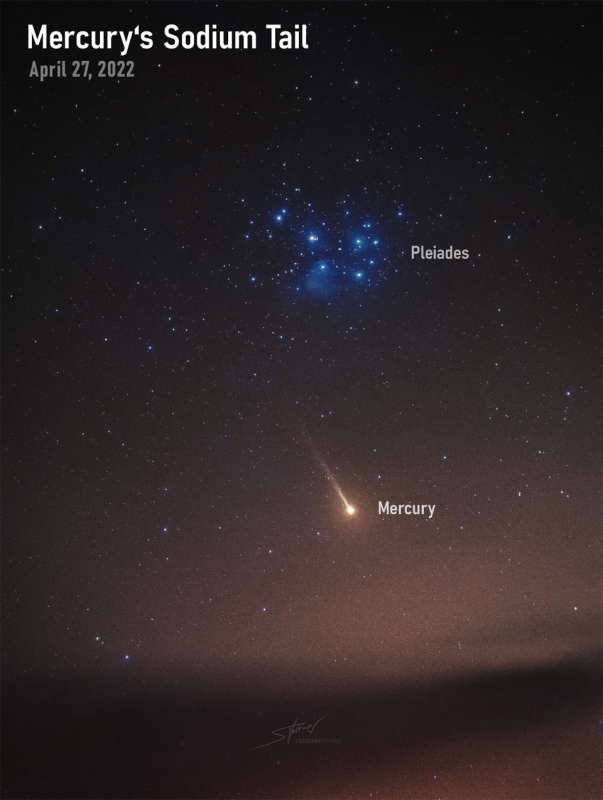
|
Credit & Copyright: Sebastian Voltmer
Explanation:
That's no comet.
Below the Pleiades star cluster
is actually a planet: Mercury.
Long exposures of our
Solar System's innermost planet may reveal something unexpected: a tail.
Mercury's thin
atmosphere
contains small amounts of
sodium
that glow when excited by light from the Sun.
Sunlight also liberates these molecules from
Mercury's surface and pushes them away.
The yellow glow from
sodium, in particular, is relatively
bright.
Pictured, Mercury and its
sodium tail
are visible in a deep image taken last week from
La Palma,
Spain
through a filter that primarily transmits
yellow light
emitted by sodium.
First
predicted
in the 1980s, Mercury's tail was first
discovered
in 2001.
Many tail details were revealed in
multiple observations
by
NASA's robotic
MESSENGER
spacecraft
that orbited Mercury between 2011 and 2015.
Tails, of course, are usually associated with
comets.
|
January February March April May June July August September October November December |
| |||||||||||||||||||||||||||||||||||||||||||||||||||||||
NASA Web Site Statements, Warnings, and Disclaimers
NASA Official: Jay Norris. Specific rights apply.
A service of: LHEA at NASA / GSFC
& Michigan Tech. U.
Based on Astronomy Picture
Of the Day
Publications with keywords: Mercury
Publications with words: Mercury
See also:
